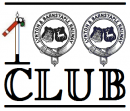Operation Snapper - How L&B Coach No.15 moved to Wales
Ffestiniog Railway Carriage No.14. Ex L&B No. 15.
Coach 15 returned to Woody Bay in September 2010 with the Ffestiniog Railway's new-build L&B style locomotive, LYD (Photo: Nigel Thompson)
One of 16 carriages built especially for the Lynton and Barnstaple Railway in 1897 by the Bristol Wagon & Carriage Co. L&B No. 15 was delivered as a brake third, but was soon altered to a composite. When the L&B was sold to the Southern Railway in 1922, this carriage was subsequently renumbered No. 6993.
The L&B was closed in September 1935, but this carriage was not sold at the disposal auction held in November, but was purchased later by a local farmer who kept it on a short length of track on the trackbed north of Snapper Halt. It was used by evacuees during the war and later as a hen house.
Bought by the Ffestiniog Railway in 1959 it was transported using an Albion lorry, to Boston Lodge where it was rebuilt into a buffet car. Named Snapper Bar during the 1960s, until the period from 1977 when Buffet Cars were named after notables in FR history when Carriage No.14 was then named William Madocks.
There is a photo of the vehicle taken in August 2017 showing that the Snapper Bar name has now been revived. Carried in small letters on the toplights: visible from both inside and out.
The following article which first appeared the Ffestiniog Railway Magazine No. 5, Summer 1959, is the story of the recovery of FR No.14 from the field near Snapper during a working party on the weekend 25th and 26th April 1959 and appears with permission of the current editor John Dobson who also comments: "I worked on the original rebuilding of No.14 in 1962, and again when it received a heavy body overhaul in the mid-1990s. Given its age and history, it has lasted remarkably well and, thanks to the Sheffield tram seats, is still one of our most comfortable third-class vehicles. Incidentally, the working party also recovered the rails on which No.6993 was standing. I believe they were later used on the Cob for a time, along with some rails that had been recovered from Pitts Head on the WHR"
OPERATION SNAPPER [Ffestiniog Railway Magazine No. 5, Summer 1959]
Many months ago, our General Manager saw the Lynton and Barnstaple coach, No 6993, lying in its field at Snapper, and realised that its acquisition would be very useful for the FR. Time went on and coaching repairs became more difficult, particularly the supply of carriage wheels; these are a much heavier pattern than the similar looking wagon wheels, and obtaining new ones is likely to be a costly item. Furthermore, apart from the little van, No.10, the only coaches left for repairs are those which had been out of doors since before the war.
After the successful acquisition and transportation of No. 26 from Waenfawr, thoughts turned again to Snapper. It was discovered however that the TRPS were interested in acquiring the coach for their museum, but when approached, they said that the transport problem was too costly for that purpose and they would be pleased to see it running on the FR In return, we promised to give them any bits and pieces we did not require.
The main question to be decided was transport. Ian Smart, still glowing after the easy removal of No. 26, was keen to try bringing it up in one piece, but the difficulty of getting it from its present site onto the road had to be overcome.
Accordingly, Fred Boughey and the General Manager set off on a reconnaissance one foggy night in December and met Ian in Devon. A reasonable purchase was negotiated with the owner and investigations were made on site.
It was known that the body as it stood would not pass the F.R. loading gauge, and it was therefore decided that the difficult and costly operation of getting it out of the field in one piece was unnecessary. Complete dismantling on site into convenient sections, so that it could be transported on Ian's "Albion" lorry, seemed to offer a reasonably simple and cheap solution.
It was decided to leave the actual move until as late as possible in order to get the benefit of longer days and finer weather, and so on Saturday, 25th April, a working party descended on Snapper. Mr. Jarvis started the work by removing the doors and will long remember the day for the amount of rain that fell. That night, John Halsall and Martin Lee arrived for the week to continue the work. It had been hoped to preserve something of the roof, but the planks were securely fixed by nails and screws and there was no alternative but to rip it off so as to leave the roof sticks, which were then numbered and carefully removed for storing.
One of the items earmarked for Towyn was a lincrusta panel. It was placed under a pile of roofing felt under the coach, but, unfortunately, the field was shared by some cows who wanted a change of diet, and the next morning only a few small pieces of roofing felt and some much chewed lincrusta were to be found. One of these fragments has been sent to Towyn nevertheless!
Each door and panel was systematically lettered and numbered to denote side and position, and the carline between each panel carefully sawn through. After prizing the panels from the very rotten bottom rail, they were removed and stored, generally complete with glass.
By Thursday midday, the final piece - the van end - was dropped down, as the General Manager returned to dismantle the underframe by burning off the rivets. This operation again proceeded according to plan, the only hold-up occurring due to some difficulty in getting the cotter out of the kingpin with no pit available. Then the various sections, including all the timber framework of the centre section, were again carefully marked.
By Friday evening, the bogies, which rolled very freely after a slight initial push, had been run off the track onto boards. The sleepers were in excellent condition; all the holding-down bolts unscrewed and only two of them needed warmth to free them. The track at the time of closure must have been first class.
On Saturday morning, after an all-night drive, the "Albion" arrived with Jan Smart and co-driver Joe Rivett. All the lighter timber portions were loaded on, with the help of some extra volunteers, and in the afternoon, the lorry set off for Portmadoc where a party was waiting to unload and store the material-all accomplished without so much as a broken window.
The following weekend, a special working party from London was at Snapper to assist with the loading of the heavier underframe, bogies, rails, etc.
A tractor had been laid on to assist with the hauling of the heavy components out of the field and onto the road, and by mid-afternoon they were away on the 300 mile journey to Portmadoc. Fred Boughey had made a special horse to mount on lan's lorry so that the 30-feet long main side members, etc. could be carried over the cab roof.
The London Area Group party finished by clearing up the site and transporting all the firewood (mostly floor and roof) up to a local house which had provided them with much welcome sustenance and refreshment.
On Sunday, 10th May, a Birmingham working party assisted with the unloading of the lorry, and by the evening the main portion of the underframe had been temporarily bolted together. A couple of side panels were cut down and temporarily mounted on the frame, and later in the week were tried through Garnedd Tunnel for clearance. Although nominally the same contour as Nos. 21 and 22, the fit in the tunnel is very close at the eaves, but it had been hoped to gain an inch or two.
The compartments will be re-assembled in the same sequence, but the portions of the van end will be slightly juggled, (though all will be used) and a new portion made to replace the guard's lookout. The position of the windows is such that the light-line throughout the train will be maintained, and the coach will make an excellent, improved and enlarged buffet car to release No. 12 as buffet/van for the second train (and obviate underframe difficulties in repairing No. 10).
Once again we must be very grateful to lan Smart, without whose lorry the task would have been prohibitively costly.
Ffestiniog Railway Magazine No. 5, Summer 1959


























